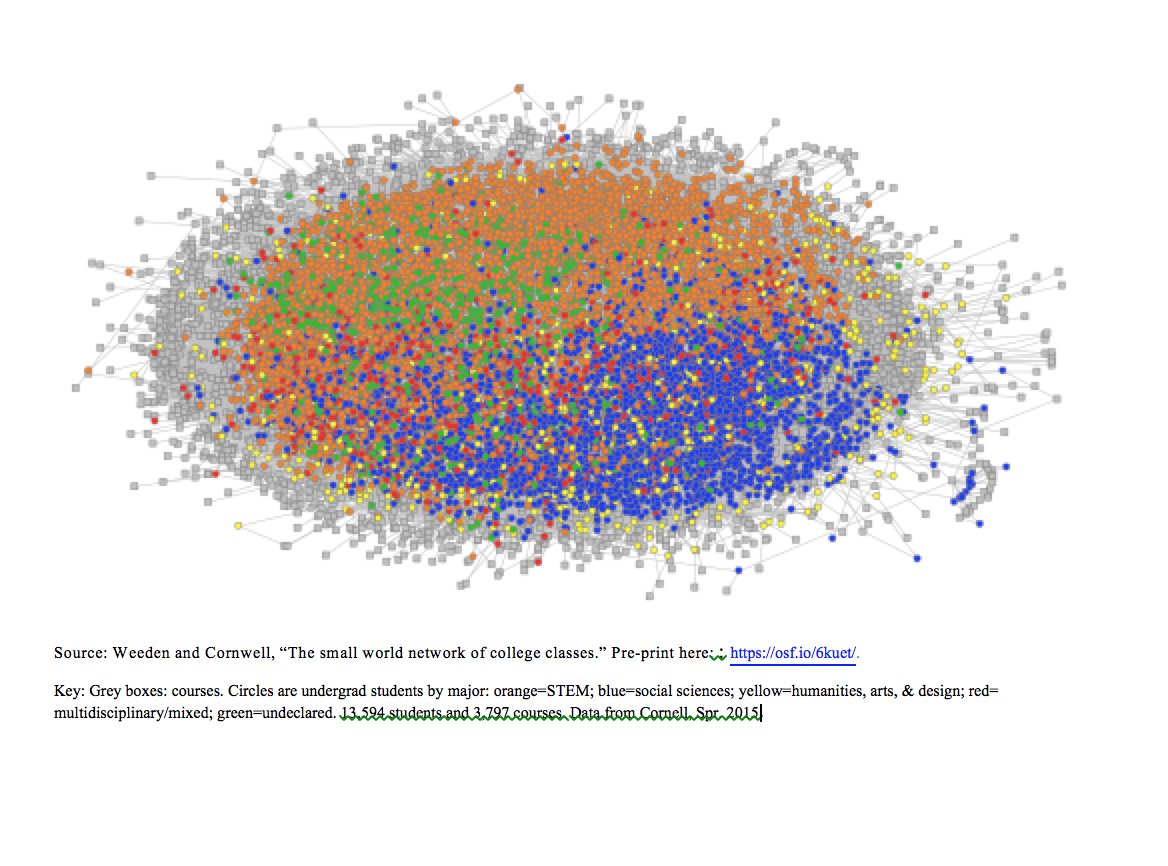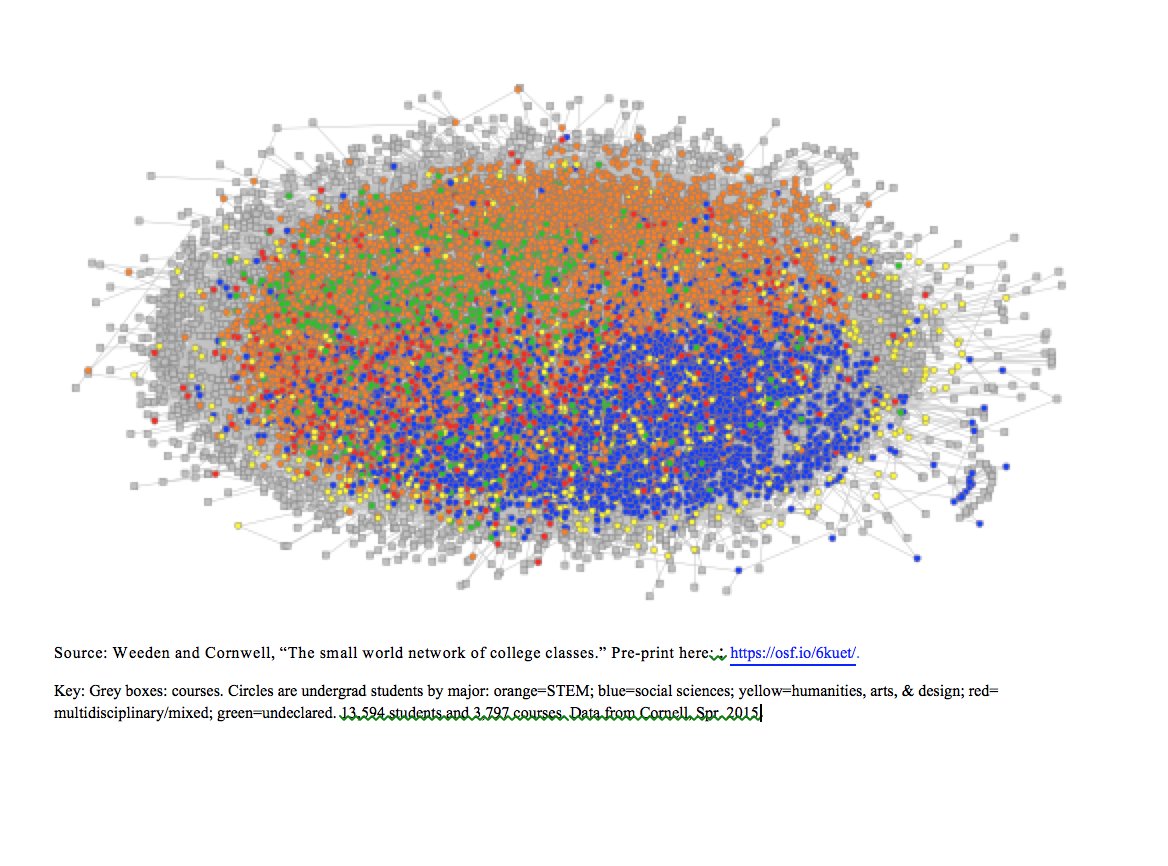Summary in thread, preprint here: osf.io/6kuet/
1/11

More details...
2/11
4/11
5/11
7/11

Removing courses with 100+ students elongates average geodesic path lengths (from 2.1 to 2.6), but does not disconnect network.
8/11
9/11
Preprint: osf.io/6kuet/. Comments welcome.
@CornellCAS @CornellSoc
11/11
1) it's a working paper, and hasn't been through peer review yet. That said, the network analysis is fairly straightforward stuff.
2) It's just one uni. Would love to have data from community colleges or other non-residential unis.








